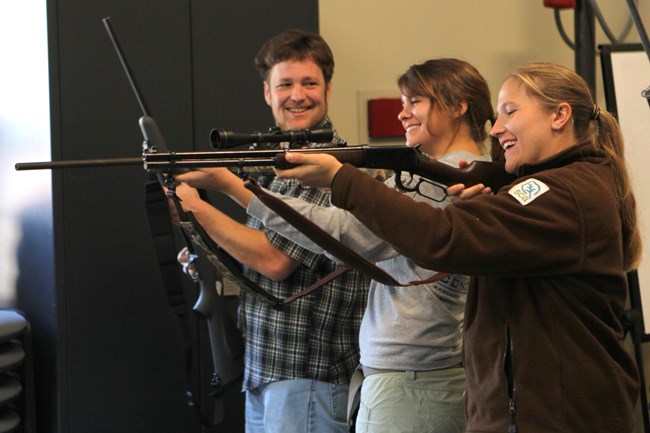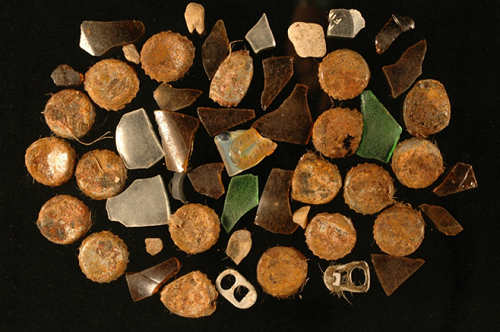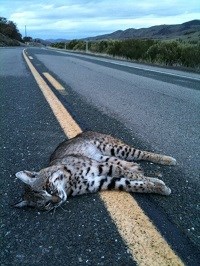The ongoing recovery of California condors has been an inspiring story, and everyone can help play a part to ensure that condors continue to soar high over our national parks and maintain sustainable populations. Through volunteer efforts, responsible stewardship in the parks, and by committing to using non-lead ammunition with firearms, we can all make a difference.

NPS
Understand the Role of Hunting
Viable, thriving ecosystems include checks and balances. Hunting has been part of natural balances for thousands of years, depending upon grazing and browsing animals just as the coyote and mountain lion do. Scavengers like condors can benefit from eating the scraps that hunters or predators leave on the land.
Hunters that use non-lead ammunition carry on the proud tradition of wildlife conservation by preventing condors and other animals from being exposed to lead, a toxic substance. Visit Hunting with-Non Lead, the North American Non-Lead Partnership, or our threats to condors page for more information.

NPS
Reduce, Reuse, Recycle
Recycle what you can, and think of creative ways to avoid using disposable products in the first place. Not only will you help reduce energy and resource consumption, but you'll also reduce the chance that trash will end up in the wrong place. Many wildlife species, including condors, can accidentally ingest or get caught in plastic or other trash. Condors may also feed small pieces of trash to their young, perhaps mistaking the trash for calcium-rich bone chips that their chick needs. This can often be fatal for the young condors. Extend the three R's ethos to activities outside of your home and look at what you can do in your community to reduce waste and litter. Volunteering to help clean up litter from natural landscapes is a particularly effective way to help wildlife.

NPS/Daniel George
Drive Safely
Thousands of animals die every year when they are struck by automobiles. Often, these road kills are scavenged on by other animals; sometimes, the scavenger will also end up dead on the road if it can't avoid a moving vehicle fast enough. Condors rarely approach roads, but vultures and other scavengers often do. Slowing down and keeping an eye out for wildlife crossings are good for both wildlife and drivers.
Report Your Observations
If you’re visiting a park or other public lands and see rare wildlife or notable behaviors you think scientists might be interested in, please contact the land management agency and report your observations.
Volunteer
There are many groups working to help California condors survive. Consider getting involved with the organization closest to where you live! There may be volunteer or internship positions available that help with different aspects of condor recovery.
Report Poaching
Poachers undermine sound wildlife management, infringe on people’s privacy, and disrespect the good efforts of responsible hunters. If you have information about illegal shootings or trespass, call the Department of Fish and Game at 888-DFG-CALTIP (888-334-2258), 24 hours a day, seven days a week.
Celebrate Working Rural Landscapes
Condors and other wildlife thrive in open landscapes with sparse human infrastructure. Because condors scavenge for dead animals, they benefit from finding the occasional cow, sheep or other ranch or farm animal that happens to die on the open range.
Continuation of ranching traditions is good for people, good for condors, and a great way to ensure that wide open tracts of land will remain part of the heritage of the West.
Last updated: February 22, 2021
